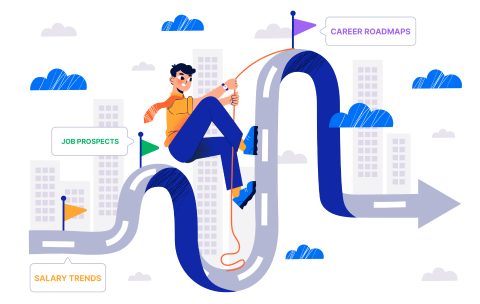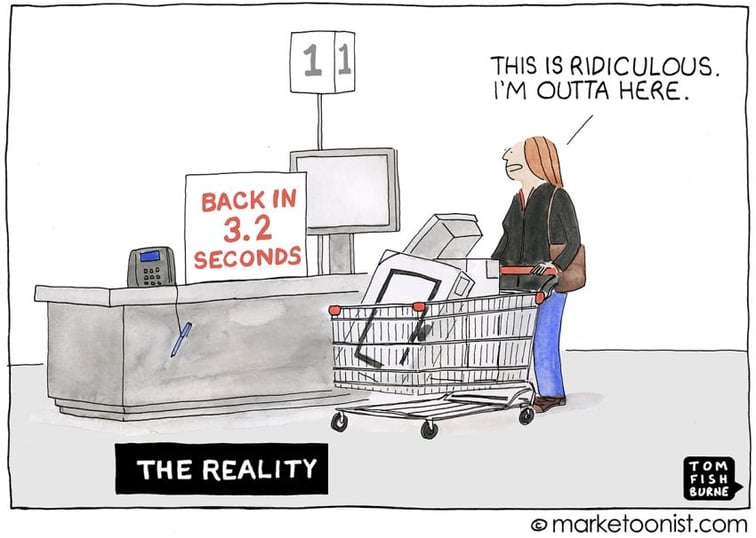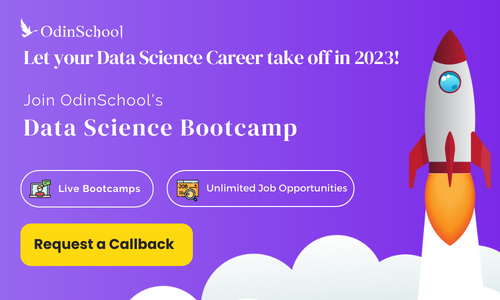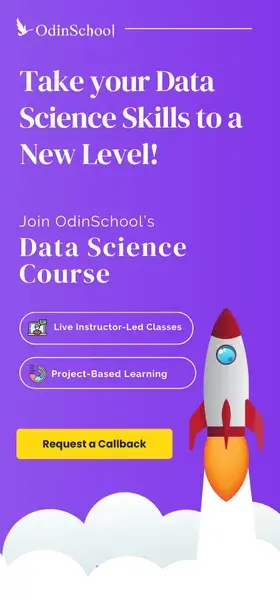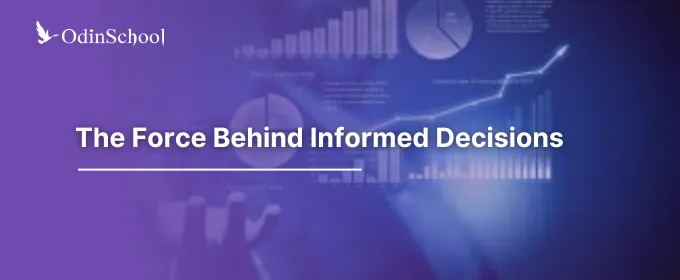Data Science Driving Consumer Experience
Summary
It goes without saying that enhancing customer service is essential to having a competitive edge over other B2C companies. Data science has swiftly emerged as a powerful tool for enhancing consumer experience using today's cutting-edge technologies.
There are brands who are changing the entire game of CX and are providing outstanding customer service by anticipating their requirements even before the customers are aware of their needs, with the use of disruptive technologies like data science, artificial intelligence, and machine learning.
Customers are willing to pay a price premium of up to 13% (and as high as 18%) simply for receiving a great customer experience.
CX (Customer Experience) is influencing more on-the-spot purchasing, 49% of buyers have made impulse purchases after receiving a more personalized experience.
The Changing Face of Consumer
Fast gratification has changed into instant gratification. And, 'instant gratification' to "continuous satisfaction". In essence, your customers anticipate immediate gratification and want what they desire immediately and constantly.
Immediate gratification is a strong motivator that currently influences consumer behavior. Customer experience is becoming a crucial differentiator for brands, and those brands are always battling it out with rivals for the attention of consumers.
In order to have a complete end-to-end perspective on consumer behavior and audience-segment data across all touchpoints, brands are working very hard round-the-clock. It has become an obvious action to expect brands to be present where the consumers are and offer a consistent user experience across all touchpoints.
This is being taken to a whole new level by using data science, artificial intelligence, machine learning, and analytic tools, which can predict the wants of a consumer even before they get aware of them.
Data Science and Consumer Experience
Keeping your consumers happy all the time is the hardest thing to do in today's world. But in the end, it all boils down to concentrating on what marketers have always understood to be the most successful: delivering the right message to the right customer at the right time.
The difference is that today, it’s more critical than ever that you do so constantly and consistently and at the same time be innovative for your customers. Example - KFC is trying to predict the food order of a customer using facial technology. Here, KFC collects demographic and behavioral data to predict a menu item.
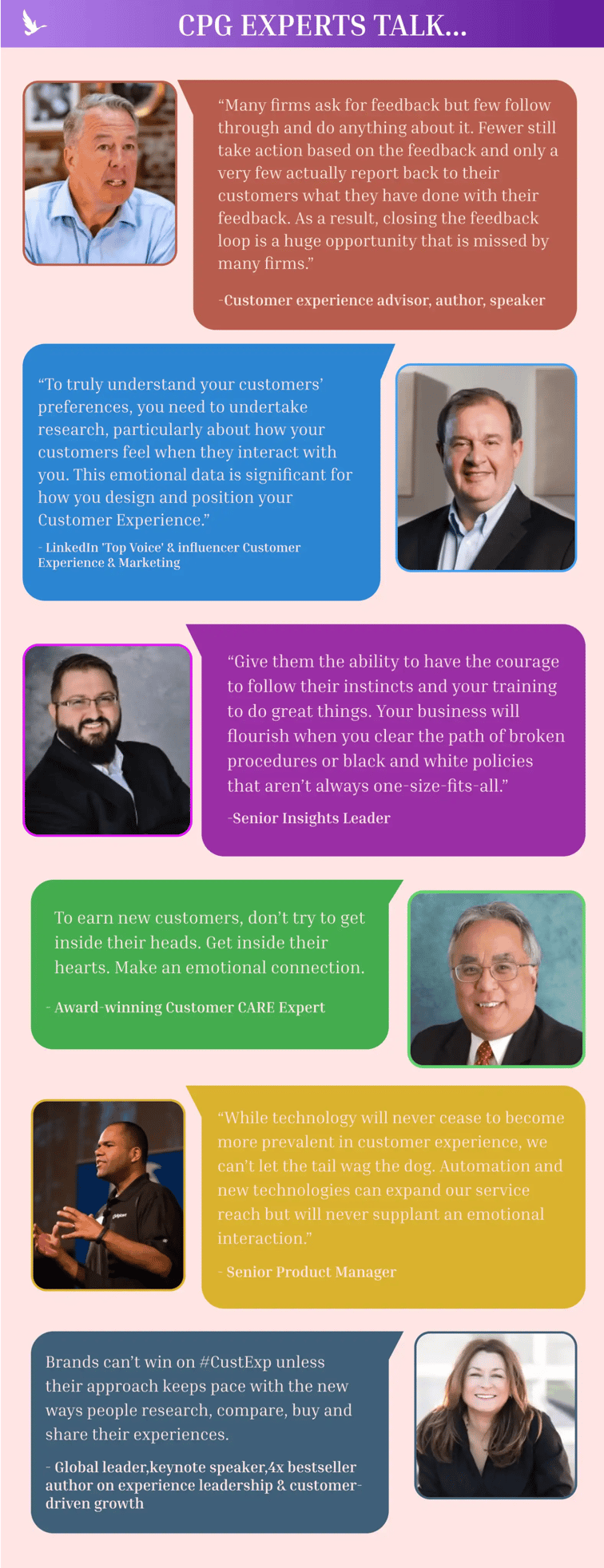
CPG Brands Winning with Data Science
Customer satisfaction is a top priority for businesses everywhere, and they are increasingly employing a data-driven strategy to interact with their clients. Businesses are providing outstanding customer service and anticipating their requirements with the use of data science, artificial intelligence, and machine learning.
CPG (Consumer Product Goods) firms are making the most of big data and analytics to understand consumer trends, buying patterns, and online user activity. Top leading CPG firms rely heavily on data and sophisticated analytics for 37% of their decisions. 59% of CPG companies utilize big data to innovate, and 67% employ analytics to understand the consumer landscape. Let us look at some of the top brands who are changing the game and winning it.
L’Oréal
Numerous cosmetics and fashion fads emerge quickly get viral on social media, giving businesses very little time to catch up with the most recent fad. Moreover, on the basis of the trend, sometimes CPG firms occasionally end-up altering their entire marketing and product strategy.
L'Oréal, a global leading manufacturer of cosmetics, has therefore created a system called TrendSpotter that employs artificial intelligence to examine millions of comments, photographs, and videos that are posted online. It searches across all social media platforms, as well as blogs and online magazines with a cosmetics concentration, in search of what's fresh and popular. Each year, the team's algorithms gather about 25 million bits of information, primarily text and hashtags from posts and articles as well as words contained in online photographs and videos.
Example - Some time back, when the trend to use calendula oil among cosmetics started garnering attention, L’Oréal was already ready with its strategy when compared to its competitors.
Oreo Biscuits
One of the most well-known and universally adored cookies is the Oreo. Since Oreo uses data science to create its cookies, it is able to outperform nearly all other cookies on the consumer market. Oreo was just another cookie or biscuit when it first hit the market.
When a cookie is separated, the creme stays with only one wafer and when dunked it breaks. All this sounds very trivial but Oreo used data science to develop its own oreometer which gathers data on different sizes, tastes, how a consumer uses the biscuit, etc to design the perfect cookies loved by all.
So, next time when you have an oreo and feel 'woww', remember to give credit to artificial intelligence.
Nestle
Over more than 150-year history, Nestlé has dominated the food and beverage sector. To improve company prospects and the customer experience, the behemoth has been utilising disruptive technologies like artificial intelligence, machine learning, sophisticated data analytics, blockchain, augmented reality, and many more.
Recent innovation is through emotional AI. They are building sensors in their vending machines that capture the consumers reaction when they taste the product. Based on these data points, they get the right recommendations for the product. So, next time you have coffee from a nestle vending machine, you might want to pose properly :)
These also enable Nestle to identify different consumer preferences and design products accordingly.
Coca-Cola
Every day, Coca-Cola, the biggest beverage corporation in the world, serves more than 1.9 billion drinks.
Customers can choose from the full range of beverages and tastes offered by the corporation using the interactive touch-screen display of the Coca-Cola Freestyle fountain drink dispenser. Coca-Cola can identify popular flavor combinations using this data. For instance, the data gathered from Freestyle dispensers served as the inspiration for Cherry Sprite.
The business also makes use of a number of AI-powered food analytics tools, like Tastewise and Trendscop, to anticipate consumer demands for a new beverage.
Coca-Cola can now create social media content that will be more likely to resonate with its target audience thanks to computer vision research.
Nike
Not all well-known brands have a cult following, but Nike, with a market cap of over $32 billion, most definitely does. From being just a sportswear label, it has developed into an athletic and lifestyle company.
Using the smartphone camera, Nike Fit employs computer vision to scan the user's foot and gather 13 visual data points. As a result, the tool presents a "best fit for you" choice when users explore new styles. These forecasts get better over time as machine learning capabilities gain expertise.
Nike receives consumer data from a variety of sources, including its supply chain, enterprise data, and app ecosystem. To utilize this data, Nike makes significant investments in data mining tools. Nike innovates and forecasts consumer behavior using this data.
P&G
An American global firm called Procter & Gamble specialises in a broad range of consumer health, personal care, and hygiene products.
P&G is transforming their everyday health and beauty products into smart advisors by utilizing AI and sensor technology to improve the user experience. Additionally, they have patented IoT tags that can refill or detect expiration dates as well as automatically fill out product purchase details. The appropriate incentives for people to purchase more are being provided by this technology.
Thus, looking at these examples or rather the moral of the story is that, the only key to thrive in the consumer space is to leverage the right data and technology.
You may also want to read Why Learn Data Science? 6 Reasons That Will Blow Your Mind
Improve Customer Experience with Data Science
The importance of data science and analytics will continue to rise in 2023 and beyond; its significance in enhancing consumer satisfaction, fostering business success, and expanding will only grow.
With today's cutting-edge technologies, data science has swiftly established itself as a powerful tool for enhancing consumer experience. In essence, data science combines statistics, analysis, and machine learning to make sense of data.
But, many businesses have not yet included any kind of data science services in their business plans, This can be the result of a vague understanding of how data science might improve consumer engagement. The main benefits of data science for your business are outlined in the list that follows.
- Get the Right Data
Companies having "too much" data is becoming more and more typical in today's digital world. Chaos can result from an abundance of data because it can be difficult for businesses to sort and prioritize the data in a way that best supports their marketing plan.
The data is also dispersed throughout numerous departments, which may cause even more confusion and inefficiency in corporate operations that depend on data for decision-making.
Thankfully, data science algorithms ensure that the right data is used at the right time and in the right context, enabling businesses to better understand and utilize their data. In other words, algorithms improve the effectiveness of sales strategies by offering more in-depth knowledge on client relationships, previous purchases, behaviors, and preferences.
- Predict and Mitigate Errors even before they Happen
Mistakes can prove costly for businesses in today's socially linked environment. It is more important than ever for businesses to reduce the likelihood of making mistakes, given how quickly bad news can spread on social media.
Machine learning algorithms can detect mistakes made by people and notify the responsible team. Correcting flaws like irrelevant or poorly targeted advertising can help you save money and guarantee that the proper audience is hearing your message.
It is especially useful for the businesses in the manufacturing industry. It can spot inefficiencies and problems that can result in a decline in product quality. Companies can provide better goods and services while also saving time and money by addressing issue areas.
- Track the latest Trends
Using both a qualitative and quantitative perspective on their business, companies can employ data analytics technologies to identify relevant trends. Moreover, analytics give businesses the ability to comprehend both internal company activity and broad market tendencies. In turn, business products, customer support, and other operational tasks can be adjusted to match the prevailing trends.
The Hardest Part…
By 2030, customer's optimal fulfillment and contentment will only increase in value. This development has significant effects on how logistics, retail, and transportation are planned.
Moments that help us pay attention are typically inconspicuous. Also, they will only be valued by the consumer once. Wonderful solutions rapidly become commonplace and are only recognised until they are broken.
Companies will keep an eye on the customer journey and consider how they can enhance the experience at each stage. The most audacious will strive to completely eliminate steps and alter expectations in the process.
When it comes to customer experience strategy, the desire to create a "differentiated customer experience" is at the top of the list of every organization's goals. However, they have not yet realized that the most successful customer experiences are those that are specifically tailored to the needs of that particular customer.
Simply put, they are unaware of how quickly consumer expectations are shifting and the implications for the creation of modern customer experience initiatives.
The only solution is to have the right data insights. And if you want upskill yourself or your entire team in data science, do contact us.

